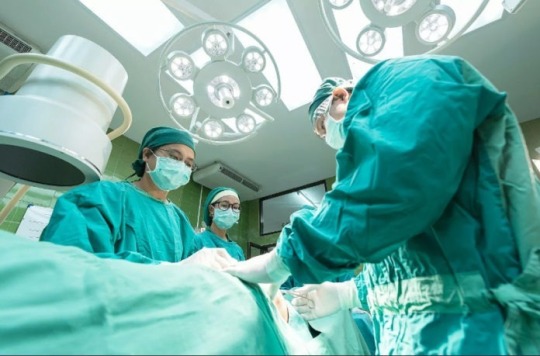#Transplantes
Photo

Consórcio de Cirurgias Plásticas em Gerais. 👩🎨👩🔬🤰👩⚕️ . . ❌ Sem Consulta SPC Serasa. ❌ Sem Consulta de Pontuação de Score. . . Planos totalmente Flexiveis e Sem Juros... Maior poder de Negociação, escolha de clínicas ou consultórios de sua preferência, com aquisições liberadas para procedimento de serviços em gerais que emitam NF, ate 10 mil sem necessidade de alienação. . . ✔️ 100% seguro, autorizado e fiscalizado pelo Banco Central. ✔️ Com 15% a 30% de lance o prazo ou parcela diminuirá, sem juros, apenas um pequena taxa de administração, seguro de vida, e recuperação de 2,5% no final do prazo. . . Beneficios exclusivos para as(os) 10 primeiras (os) que entrarem em contato. simulação gratis: Especialista em Liberação de Creditos de Serviços: ALISSON GONÇALVES +55 11 98321-6599 email: [email protected] #Plasticas #cirurgias #cirurgiasplasticas #protesedesilicone #lipoaspiracao #rinoplastia #mamoplastiaredutora #abdominoplastiaemancora #mamoplastia #abdominoplastia #inseminacaoartificial #lipoaspiracao #silicone #abdominoplastia #botox #transplantes #rinoplastia #servicos #cirurgiaplastica #transexual #trans #transplanteodontologico #estetica #fitnes #beleza #moda #musa #miss #modelo #corpo #biomedicina #medicina #clinica #estetica (em São Bernardo do Campo, Brazil) https://www.instagram.com/p/B8d7dVdgG2d/?igshid=NGJjMDIxMWI=
#plasticas#cirurgias#cirurgiasplasticas#protesedesilicone#lipoaspiracao#rinoplastia#mamoplastiaredutora#abdominoplastiaemancora#mamoplastia#abdominoplastia#inseminacaoartificial#silicone#botox#transplantes#servicos#cirurgiaplastica#transexual#trans#transplanteodontologico#estetica#fitnes#beleza#moda#musa#miss#modelo#corpo#biomedicina#medicina#clinica
2 notes
·
View notes
Text
"The first modern attempt at transferring a uterus from one human to another occurred at the turn of the millennium. But surgeons had to remove the organ, which had become necrotic, 99 days later. The first successful transplant was performed in 2011 — but even then, the recipient wasn’t immediately able to get pregnant and deliver a baby. It took three more years for the first person in the world with a transplanted uterus to give birth.
More than 70 such babies have been born globally in the decade since. “It’s a complete new world,” said Giuliano Testa, chief of abdominal transplant at Baylor University Medical Center.
Almost a third of those babies — 22 and counting — have been born in Dallas at Baylor. On Thursday, Testa and his team published a major cohort study in JAMA analyzing the results from the program’s first 20 patients. All women were of reproductive age and had no uterus (most having been born without one), but had at least one functioning ovary. Most of the uteri came from living donors, but two came from deceased donors.
Fourteen women had successful transplants, all of whom were able to have at least one baby.
“That success rate is extraordinary, and I want that to get out there,” said Liza Johannesson, the medical director of uterus transplants at Baylor, who works with Testa and co-authored the study. “We want this to be an option for all women out there that need it.”
Six patients had transplant failures, all within two weeks of the procedure. Part of the problem may have been a learning curve: The study initially included only 10 patients, and five of the six with failed transplants were in that first group. These were “technical” failures, Testa said, involving aspects of the surgery such as how surgeons connected the organ’s blood vessels, what material was used for sutures, and selecting a uterus that would work well in a transplant.
The team saw only one transplant fail in the second group of 10 people, the researchers said. All 20 transplants took place between September 2016 and August 2019.
Only one other cohort study has previously been published on uterus transplants, in 2022. A Swedish team, which included Johannesson before she moved to Baylor, performed seven successful transplants out of nine attempts. Six women, including the first transplant recipient to ever deliver a baby back in 2014, gave birth.
“It’s hard to extract data from that, because they were the first ones that did it,” Johannesson said. “This is the first time we can actually see the safety and efficacy of this procedure properly.”
So far, the signs are good: High success rates for transplants and live births, safe and healthy children so far, and early signs that immunosuppressants — typically given to transplant recipients so their bodies don’t reject the new organ — may not cause long-term harm, the researchers said. (The uterine transplants are removed after recipients no longer need them to deliver children.) And the Baylor team has figured out how to identify the right uterus for transfer: It should be from a donor who has had a baby before, is premenopausal, and, of course, who matches the blood type of the recipient, Testa said...
“They’ve really embraced the idea of practicing improvement as you go along, to understand how to make this safer or more effective. And that’s reflected in the results,” said Jessica Walter, an assistant professor of reproductive endocrinology and infertility at Northwestern University Feinberg School of Medicine, who co-authored an editorial on the research in JAMA...
Walter was a skeptic herself when she first learned about uterine transplants. The procedure seemed invasive and complicated. But she did her fellowship training at Penn Medicine, home to one of just four programs in the U.S. doing uterine transplants.
“The firsts — the first time the patient received a transplant, the first time she got her period after the transplant, the positive pregnancy test,” Walter said. “Immersing myself in the science, the patients, the practitioners, and researchers — it really changed my opinion that this is science, and this is an innovation like anything else.” ...
Many transgender women are hopeful that uterine transplants might someday be available for them, but it’s likely a far-off possibility. Scientists need to rewind and do animal studies on how a uterus might fare in a different “hormonal milieu” before doing any clinical trials of the procedure with trans people, Wagner said.
Among cisgender women, more long-term research is still needed on the donors, recipients, and the children they have, experts said.
“We want other centers to start up,” Johannesson said. “Our main goal is to publish all of our data, as much as we can.”"
-via Stat, August 16, 2024
#infertility#uterus#organ transplant#reproductive health#public health#medical news#childbirth#good news#hope#pregnancy#cw pregnancy
14K notes
·
View notes
Text
El Querétaro Maratón 2024 será con causa para la donación de órganos.
La décima cuarta edición del Querétaro Mararón 2024, a relizarse el 6 de octubre en la capital del estado, abre inscripciones el próximo 15 de julio y tiene una causa social de salud promovida por el Centro Estatal de transplantes en el cual, a través del evento, se podrán donar órganos para dar vida a las y los queretanos.
El Consejo de Participación Ciudadana Temático del Querétaro Maratón,…
0 notes
Text
Costa Rica celebra avances en donación de órganos durante Semana Nacional
CR Informativa | [email protected]
San José, 18 de junio del 2024. – La Semana Nacional de la Donación de Órganos y Tejidos ha sido inaugurada por el Ministerio de Salud y la Caja Costarricense del Seguro Social (CCSS), marcando un hito con avances que prometen mejorar los procesos de donación en el país.
El Dr. Alexander Sánchez Cabo, gerente médico a.i de la CCSS, destacó las 15…

View On WordPress
#CCSS#CR Informativa#Donación de órganos#Ministerio de Salud#Semana Nacional de Donación de Órganos#SINADOC#Transplantes
0 notes
Text
Misiones está en los primeros puestos en donación de órganos
Suman más de 10.800 los pacientes en lista de espera en el país.
Los datos provenientes del INCUCAI reflejan que la Provincia de Misiones tuvo donantes reales en comparativo interanual de febrero 2023 a febrero 2024 un total de 19,8 donantes de órganos por millón de habitantes (DPMH), ubicándola en el puesto 8 a nivel país.
Vale la oportunidad para educar, concientizar y movilizar a la…

View On WordPress
0 notes
Text
Los hospitales de Alicante registran 88 donantes de órganos hasta noviembre, un 24% más que en el año 2022
La provincia de Alicante ha contabilizado entre enero y noviembre 88 donantes de órganos, lo que supone un 24% más que la cifra alcanzada por las mismas fechas en el año 2022. Este incremento ha sido posible, en gran parte, gracias al impulso a la donación que se ha producido en los hospitales comarcales por parte de sus equipos de coordinación de trasplantes.
Unos datos de donación que han…

View On WordPress
0 notes
Text
Trasplantados renales del Hospital Dr. Gustavo Fricke inician una nueva etapa
Nueva publicación en https://ct2.cl/82
Trasplantados renales del Hospital Dr. Gustavo Fricke inician una nueva etapa
Ambos del sector salud, forman parte de los 7 pacientes que han recibido un riñón en el establecimiento este 2023.
Alicia tiene 37 años, es TENS en el Hospital Biprovincial de Quillota Petorca y tiene un hijo adolescente. Duban tiene 25, es de La Ligua y estudia enfermería. Ambos tienen algo en común, más allá de su vocación, y que los unirá para siempre: fueron trasplantados de riñón en el Hospital Dr. Gustavo Fricke y hoy tienen una nueva vida.
Ambos recibieron a las autoridades sanitarias encabezadas por la Dr. Dafne Secul, Subdirectora de Gestión Asistencial del Servicio de Salud Viña del Mar Quillota y el Director del Hospital, José Luis Moya, quienes manifestaron su esperanza y alegría por estos exitosos procesos de trasplante renal con los que el establecimiento ya completa 7 en lo que va del 2023.
Junto con destacar que ambos trasplantados coinciden como parte del sector salud, la Dra. Dafne Secul, Subdirectora Médica del Servicio de Salud Viña del Mar Quillota destacó que a nivel de los Hospitales de la red asistencial “es muy importante cómo ha cambiado la mirada frente al trasplante, en el sentido que todo el equipo clínico, todo el Hospital, todos están muy atentos para participar y para apoyar que se puedan realizar estas complejas cirugías. Eso pasa por determinar qué persona es un potencial donante y desde allí todo el proceso para la procura de órgano y el trasplante que tienen tiempos muy acotados y condiciones muy acotadas para poder lograr estos trasplantes exitosos”.
“Solo verlos a ellos muy contentos, muy bien recuperados y a corto tiempo de su trasplante. Ellos también nos manifiestan que han sido muy bien atendidos por todo el equipo clínico. Por tanto, eso es nuestra razón de ser”, afirma el Director del Hospital Dr. Gustavo Fricke José Luis Moya. Al mismo tiempo el directivo felicitó a los equipos de procura y de trasplante renal: “es un equipo muy perseverante, muy motivado, Y es muy exitoso. Ya llevamos más de siete trasplantes este año y lo más seguro es que lo dupliquemos de aquí hasta el fin de año, lo cual nos hace posicionarnos muy bien dentro del país en esta materia”.
Como Subdirectora Médica del establecimiento y nefróloga tratante de Alicia, la Dra. Tatiana Aldunate dice que ha tenido “tres oportunidades de felicidad. Uno, porque soy nefróloga y a Alicia la conozco como médico y era mi paciente en la terapia de diálisis peritoneal, así que estoy muy feliz por ella, porque además es una hermosa persona, optimista y es colega nuestra, porque forma parte del personal de salud que nos hace sentir mucho más feliz. Pero sobre todo nos hace sentir esa felicidad de la esperanza, porque llevamos siete trasplantes en el año y eso augura un feliz 2023 para la actividad de trasplante renal y también cardíaca, porque algo que nos caracteriza como Hospital es esta actividad de trasplante”. “Cada vez, añade la nefróloga, el personal entero de los distintos servicios vibran con esta actividad y quieren participar activamente en hacernos más fácil una difícil actividad la de procura y trasplante. Así que no solamente estamos trabajando como Hospital, sino que también en la red se han incorporado Quillota y Quilpué en la actividad de procura para tener pacientes que puedan ser trasplantados”.
Alicia: “Yo atendía a mis pacientes renales, nunca pensé que yo iba a estar en la piel de ellos”
Alicia Gutiérrez, orgullosa TENS del Hospital Biprovincial Quillota Petorca y mamá, no oculta sus ganas de volver a estar con sus pacientes, de los cuales ella formó parte debido a una patología renal progresiva y agresiva que llegó a terminar con un riñón y a dejar otro con un 20% de función. Así, se inscribió en la lista de espera en febrero de este año, llena de energía positiva. Y así llegó el 04 de julio: “ese día me llamaron y yo me iba a ir a tomar desayuno en mi trabajo, me dicen no, no tomes nada, vente al Fricke, yo así ¿por qué? ¿qué pasó? No, me dicen, tienes tu riñón. Ahí fue una emoción, mis compañeros como que me empezaron a aplaudir cuando yo me estaba yendo, mi jefe me trajo, pero fue maravilloso”.
Alicia afirma que “hay que ser positiva, no hay que echarse para abajo, hay que tener fe nomás. Así que acá, feliz, esperando que pasen luego, pronto ya los meses de cuidado y volver a trabajar, porque a mí me encanta estar con mis pacientes, con mis colegas, ver los pabellones. Yo creo que el próximo año va a ser 2.0, así de máximo al pabellón es lo que más me gusta. Eso voy a hacer, seguir trabajando en lo que me gusta”.
Finalmente, hace un llamado a la donación: “Yo vengo del otro lado, yo voy a la parte clínica, yo atendía a mis pacientes renales, nunca pensé que yo iba a estar en la piel de ellos y acá estuve pues. Es maravilloso poder darle vida a otra persona y ver la felicidad que le produce a uno mismo, a su familia, a su gente querida. Hay que donar, chiquillos, no tenemos que ser egoístas. Y gracias a la familia, gracias al Hospital, se portaron un 7”.
Duban: “Yo dependía de una máquina para vivir tres veces a la semana y sin esa máquina lamentablemente no podía seguir viviendo”
Duban Sánchez, liguano de 25 años, está cursando su quinto año de enfermería, y esperando poder hacer su internado en el Hospital de La Ligua en 2024. Detectada su insuficiencia renal en etapa 4 a los 18 años, se cuidó lo suficiente para iniciar su diálisis a los 20, junto con sus estudios superiores, los que fue ido superando con mucha organización y disciplina, que lo prepararon para enfrentar de mejor manera las dos oportunidades en que su trasplante no se pudo concretar por falta de compatibilidad. Pero la tercera es la vencida.
“Porque a las 6 llegué, a las 11 estaba en pabellón y a las 3 de la tarde ya estaba trasplantado en la UCI. Así que fue como todo muy rápido, porque uno piensa en ese momento pero cuando pasa, pasa tan rápido. Y gracias a Dios, todo bien. Estoy empezando a hacer un poquito más de cosas, pero igual me explicaban que los cuidados como críticos, críticos, son los primeros tres meses, pero llevo 24 días y bien”, explica.
“Yo dependía de una máquina para vivir tres veces a la semana y sin esa máquina lamentablemente no podía seguir viviendo, y ahora, gracias a esa donación yo puedo empezar a hacer una vida totalmente normal y no sólo de riñón, corazón, pulmón y finalmente donar vida, donar mejor calidad de vida, tanto para mí como para mi familia, porque yo era quien me dializaba, pero atrás mío hay mucha familia, que finalmente sufren con uno, si eso es así. Donar y donar vida, donar mejor calidad de vida”, finaliza Duban.
0 notes
Text
Sick of characters who are simply Cool or Badass or Horrifying or Edgy all the time. They need to be pathetic too. It elevates them. It’s like adding a bit of salt to a sweet dish to bring out the flavour. Tbh, I think a character can only be truly horrifying, badass, etc. WITH a lil bit of pathetic in 'em.
#i did a variation of this post on twitter and just forgot to transplant it here rip#ramblings#my post
4K notes
·
View notes
Text










gay sex
#house md#gregory house#james wilson#hilson#gay#yeah punch that old man get him#gay gay homosexual gay#screencap#s08e02 “Transplant”#can't believe they aired gayporn live on air just like that#and wasn't it fox#my nonamerican ass knows just enough to find it funny
9K notes
·
View notes
Text

I was busy doing commissions and dealing with chronic pain, but it's still lesbian visibility week so i hope you all feel seen :)
Both characters are trans women (she/her)
#lesbian#my art#art#lucy#wiki#i really like how this piece turned out#transbian#trans#oc#illustration#lesbian visibility week#i love lesbians#i used to identify as one dfghdfhdfg#but you know..#life happened#turns out i am bi#but im still kind of a dyke at heart#anyways the big scar on lucy's tummy is a uterus transplant#they live in the future#so they get future technology :)#anyways#transgender#artistic nudity#i did censor this a bit for tumblr
2K notes
·
View notes
Text

*Viciously shakes her like a chewtoy*
#the amazing digital circus#pomni#tadc pomni#tadc#lillys doodles#cartoon#illustration#shes me fr#Stress relief squeaky toy#just transplant all of it onto her lol
7K notes
·
View notes
Text

motherhood.
#cw: gore#cw: blood#cw: body horror#cw: pregnancy#at least a metaphorical one#unfortunately i fuck with the body horror side of claymore very much#the cinema of clare holding teresa's severed head in her hands...getting her organs transplanted into her...#the way that her “awakened” form is inherently messy and wild and feral while teresa is pristine and angelic#oughhhh....the themes...the idealised mother..#the way that the only reason teresa is strong enough to beat priscilla easily is because clare BELIEVES she's that strong#despite irene literally saying in canon that priscilla had it in her to surpass teresa as a CHILD#teresa you would love to see the touchstarved animal of rage and grief your daughter grew up into#and also feel conflicted about how she willingly submitted her life to a system you were forcibly trapped in for the sake of avenging you#probably#teresa of the faint smile#clare claymore#teresa claymore#claymore manga#claymore#stillindigo art
1K notes
·
View notes
Text

#leave appalachia alone#staring at the snowbirds and the half-backs and the gentrifying transplants like#appalachian#appalachian gothic#appalachia#americana#american gothic#rural#cr: fiona o'hanlon
1K notes
·
View notes
Text
SES apresenta relatório do 2º quadrimestre aos parlamentares sergipanos
SES apresenta relatório do 2º quadrimestre aos parlamentares sergipanos
Na manhã desta quarta-feira, 30, a gestora da Secretária de Estado da Saúde (SES), Mércia Feitosa, prestou contas da pasta aos deputados estaduais da Assembleia Legislativa de Sergipe (Alese). A secretária de Governo apresentou os investimentos 2º Quadrimestre de 2022, onde foram detalhados dados sobre a execução orçamentária; receitas, inclusive das fundações; investimentos; e os dados da…

View On WordPress
#Assembleia Legislativa de Sergipe (Alese)#assistencia farmacêutica#Centro de Atenção á Saúde (CASE)#Cirurgias Eletivas#Hospital de Cirurgia#Mércia Feitosa#Secretaria de Estado da Saúde (SES)#Transplantes
0 notes
Text
"In a highly-anticipated world-first, the Texas Heart Institute has successfully implanted an artificial titanium heart that uses the same technology as bullet trains to pump blood mechanically throughout the body.
Called the Total Artificial Heart (TAH), the feat is seen as a major step in keeping people alive for longer and longer periods while they wait for heart transplants.
Texas Heart partnered with the medical tech company BiVACOR to create the TAH. It’s a titanium-constructed biventricular rotary blood pump with a single moving part that utilizes a magnetically levitated rotor that pumps the blood and replaces both ventricles of a failing heart.
The benefit of using magnetic levitation is that none of the moving parts ever scrape or slide against each other, reducing friction, and dramatically increasing the longevity of the device. But what’s really cool is the TAH can pump blood at a rate of 12 liters per minute, enough to allow an adult male to engage in exercise.
The first-in-human clinical study, overseen closely by the FDA, aims to evaluate the safety and performance of the BiVACOR TAH as a bridge-to-transplant solution for patients with severe bi or univentricular heart failure. Following this first implantation completed at Baylor St. Luke’s Medical Center in the Texas Medical Center, four additional patients are to be enrolled in the study.
“The Texas Heart Institute is enthused about the groundbreaking first implantation of BiVACOR’s TAH. With heart failure remaining a leading cause of mortality globally, the BiVACOR TAH offers a beacon of hope for countless patients awaiting a heart transplant,” said Dr. Joseph Rogers, President and Chief Executive Officer of The Texas Heart Institute and National Principal Investigator on the research.
“We are proud to be at the forefront of this medical breakthrough, working alongside the dedicated teams at BiVACOR, Baylor College of Medicine, and Baylor St. Luke’s Medical Center to transform the future of heart failure therapy for this vulnerable population.”
Heart failure is a global epidemic affecting at least 26 million people worldwide, 6.2 million adults in the US, and is increasing in prevalence. Heart transplantations are reserved for those with severe heart failure and are limited to fewer than 6,000 procedures per year globally. Consequently, the US National Institutes of Health estimated that up to 100,000 patients could immediately benefit from mechanical alternatives.
The successful implantation of BiVACOR’s TAH highlights the potential of innovative technologies to address critical challenges in cardiac care, such as long transplantation waitlists.
“This achievement would not have been possible without the courage of our first patient and their family, the dedication of our team, and our expert collaborators at The Texas Heart Institute,” said Daniel Timms, founder and CTO of BiVACOR."
youtube
-Article via Good News Network, August 1, 2024. Video via 7News Australia, July 26, 2024.
#heart transplant#organ transplant#medical news#public health#organ donation#heart disease#titanium#texas#australia#cyborg#mechanical#transhumanism#the future is now#like for real apparently#good news#hope#Youtube
567 notes
·
View notes